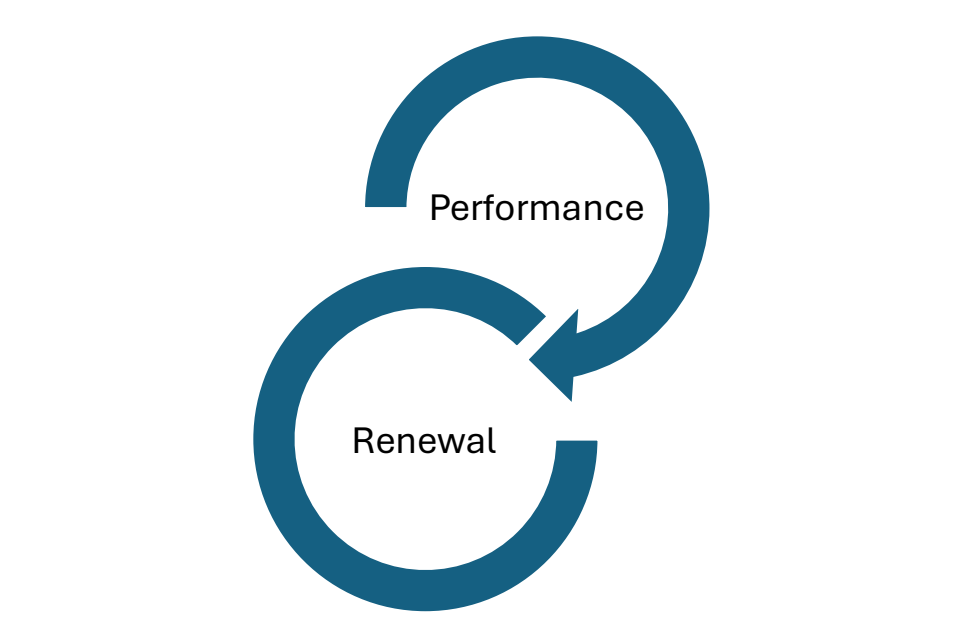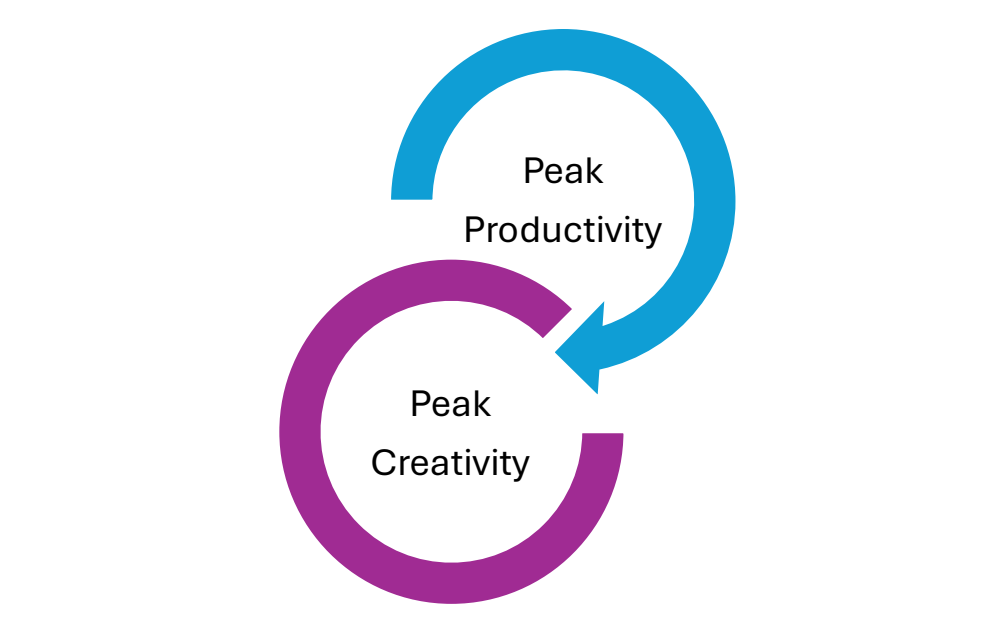Robin Sharma talks about the twin cycles of peak performance – the ebb and flow between going all out and working hard, and then a period of rest and renewal. In order to consistently put out high-quality work into the world over the course of a career and lifetime, we need to learn to respect these ebbs and flows in energy, and use strategies to take advantage of them.
In this blog, I will discuss my recent experiences with my own energy flows, and how I have learned to modify my routine during periods of lower energy to renew and get ready for the next cycle of high performance.
Who will this post help? Anyone who is feeling drained, and keeps thinking, I just need to get to the end of the project, or that next holiday and everything will be okay. How many times have you told yourself that before? Only to get to the end of the project and get swept up in the next one immediately? Or after returning from holiday refreshed, only to find yourself exhausted from work by the end of the first week back? If this is you, then these insights might help you approach work differently and unlock a new level of sustainable performance from yourself.
The Different Performance Cycles
I approach my own performance like a weight training program, with micro (daily/weekly), meso (2-3 months) and macro (project) cycles.
Micro-Cycle
Your daily/weekly routine – we rise, go about our business, and then sleep at night. Most productivity tips focus on the micro-cycle – with good calendar systems, optimised sleep routines, and making every minute used intentionally. Having a great micro-cycle is fantastic, and we should all start here if we want to become the best versions of ourselves.
Macro Cycle
Usually set externally by clients or employers, it’s driven by calendar years, projects or long-term deadlines. At the end of the macro-cycle, we typically take holidays or long weekends to reset. As a society we focus on the macro-cycle too much. The big break when the project is done, the 4 weeks of annual leave, the big breaks at Easter and Christmas. The problem with focusing too much on the macro-cycle is that it neglects where most burn-out occurs – in the meso-cycles of performance. Mid-project, when your energy drops, instead of making some minor adjustments to your routine to allow you to recharge, you grind on and double down on putting in the extra hours. This depletes you more and drops your performance even further.
Meso-Cycle
This is energy-driven. It’s unique to each individual, and in my experience, the length is different every time. For me, I estimate it’s 2–3 months. During the meso-cycle, I will be intensely focussed on my objectives – my gym routine, my projects, and getting the most out of every day. As the meso-cycle nears the end, however, I notice that my motivation wanes. I struggle to get up and go to the gym, I’m not interested in reading books, and my to-do list becomes much shorter. In general, I lose intensity, passion and inspiration. Now for most of my life, I would kick myself during this period, and having been through 3 bouts of burnout, this was clearly to my own detriment.
Respecting the Meso–Cycle
Recently, though, I have adopted a different tactic. Having implemented and fine-tuned a great daily/weekly calendar routine, I was really at the top of my game. I got through 5 books in 8 weeks, was training consistently, kicking goals with multiple clients; making great progress in my guitar playing, and being present with my family. Then I noticed my motivation dropping. I wasn’t interested in reading the next book. Then I was struggling to get myself to the gym. My energy was dropping. When this happened, my thoughts became less positive. What’s wrong with me? Everything is going well, why aren’t I motivated?
Now, in the past, I would’ve pushed aside these negative thoughts and just forced myself to continue. This time, however, I thought I would try a different tactic. Instead of beating myself up, I accepted that I just needed to slow down a little to allow myself time to recharge. What did this mean in practice? Well, it meant not reading that next book, not worrying if I didn’t get to the gym at 6:30 am – I’d just go at 11 am instead; saying no to the next project. Generally, it was about taking the pressure to perform off myself. Still doing the things I needed to do, like work and being a father, but releasing those personal expectations to always be at peak performance.
I’m at the end of a meso-cycle right now, and I can feel that taking this approach is allowing me to recharge faster than I have previously. I estimate that after a couple of weeks of reduced intensity, I will be able to lock in again and perform at my best.
A Time for Creativity
During this current period of renewal, I am employing an insight I learnt from the book Hyperfocus by Chris Bailey. When our energy is highest, we are at our most productive, and when it’s lowest, we are at our most creative. So during this period of low energy, I am doing more creative things such as journalling and reflection, blog writing, and improvisation on guitar. Interestingly, these activities are easier at this low energy level. The ideas are flowing out of my mind and hands without as much conscious effort as I feel when I’m in a more productive, high–energy period. I also feel my inspiration and motivation returning more quickly than it has in the past. After this experience, I think another way to look at the twin cycles of peak performance model is an oscillation between productivity and creativity.
Summing Up
Understanding that peak performance is not linear but cyclical is the key to realising sustainable levels of productivity over a lifetime. If we model our performance using the training cycles typically used in sports, we can see the approach to work in our professional lives neglects the important meso (middle) cycle. It is this neglect of the natural cycle or rhythm within our overarching project cycles that, in my opinion, leads to much of the burnout we are seeing in the modern workplace. By understanding that we can only push for sprints of 2–3 months before needing a period of reduced intensity to recharge, we can set ourselves up for sustained and continued high performance over a lifetime. Reframing our periods of low energy as a time for peak creativity allows us to feel good about recharging, which makes it easier to embrace these periods of renewal. Which allows us to recharge faster and more fully for that next big push. All systems in the world are cyclical, so why does modern society think the human ability to work and produce is any different?





